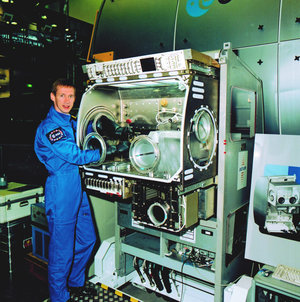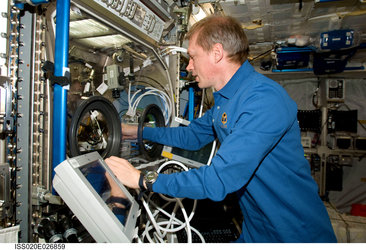

Microgravity Science Glovebox (MSG)
The MSG will enable astronauts on board the ISS to perform a wide variety of materials, combustion, fluids and biotechnology experiments as well as investigations in the microgravity environment. It can also accommodate minor repairs and servicing of hardware requiring a controlled working environment. The facility offers users a wide range of innovative, utilization alternatives from manual control by astronauts via laptop computers to fully automated and remote control from Earth (telescience). A permanent data exchange link with ground stations is also ensured.
The MSG will be integrated and used in the US Destiny Laboratory for a projected operational period of ten years.
ESA is planning to use the facility for European experiments. The first time MSG will be used by a European astronaut to perform European experiments will be during a Soyuz taxi flight mission in October 2002. ESA's Belgian astronaut Frank De Winne will perform four different experiments in the MSG in the field of protein crystallization, zeolites crystallization, combustion and fluid science.





